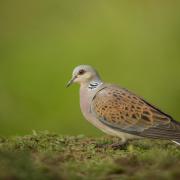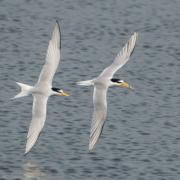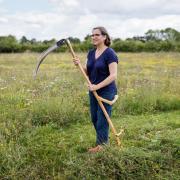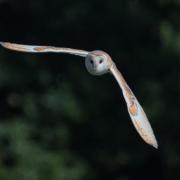Hedgehogs are struggling for survival. Wildlife photographer Kevin Sawford and shares an insight to their precarious lives

Early November signals the start of long cold nights.
For one mammal species it’s a time for decisions. Hedgehogs have to decide when to hibernate.
Hedgehogs have been in significant decline for a number of years, for several reasons. One is habitat loss from the building of new houses, many of which don’t have nature-friendly gardens. With these new dwellings come more roads. Hedgehogs can travel more than a mile a night, but this is a lot more difficult with fences, drains and traffic to contend with. Also hedgehogs can be seriously affected by their diet. It’s true that they are the ‘gardener’s friend’, eating unwanted snails and slugs, but these can cause lungworm, which can kill a hedgehog, particularly if they cannot find any other food sources.
A hedgehog’s diet is very varied – they prefer to feast on caterpillars, earthworms, beetles and many other insect species. Hedgehogs unfortunately succumb to many other diseases, as well as predation from badgers and foxes. And they have no idea that that perfect hibernation pile of twigs and branches at the end of the garden is going to go up in flames to celebrate the foiling of an attempt to blow up the Houses of Parliament way back in 1605.
Despite all these problems many hedgehogs are being given a helping hand by people across the county such as a band of dedicated individuals who put their time and money into running hedgehog/animal rescue centres. I have got to know a couple who run a centre in the county. Seeing the amount of time and effort they put into caring for the sick animals is humbling, be it feeding young babies throughout the night or visiting release sites to make sure they are suitable for the recovered animals.
Exactly when a hedgehog decides to hibernate often depends on the climate, particularly temperature. They build nests from grass, leaves and twigs, and they feed well to store energy, even though during this sleep or torpor they will slow down their bodies to use as little energy as possible. During milder spells hedgehogs might be seen out and about, as they wake up and search for food.
Hedgehogs are struggling and need help if they are to survive in this country. For more information how you can help the Suffolk Wildlife Trust has a webpage full of tips. www.suffolkwildlifetrust.org/hedgehog-action.
November wildlife highlights
By the time November comes around many of the county’s winter bird visitors have arrived. Varied species of geese, ducks and waders will be around the coastline. Many of the bird visitors to our garden feeding stations will have come from Europe.
Blackbirds, thrushes and many species of smaller birds will have crossed the North Sea to escape the harsh winter in Scandinavia and Germany to take up winter residence in and around your garden. One of winter’s great natural spectacles is performed by one of these visitors. Starlings will readily come to feed in gardens, but their pre-roost display, or murmuration as it is know, involves literally thousands of birds swirling in the air. It’s a sight to behold, as they gather in the sky, often over reed beds, and as the light fades their numbers increase until suddenly they dive down into the reeds where they will stay until first light.
Suffolk has a number of places to look for this spectacle, two being the Suffolk Wildlife Trust reserve at Lackford Lakes and RSPB Minsmere.



























